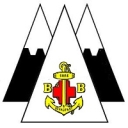Virtual Linguistics
Please note that, on this website, we will (for convenience) refer to Scottish Gaelic as just Gaelic. If, and when, we need ro refer to Irish Gaelic, we will describe this as Irish and if, and when, we need to refer to Lowland Scots, we will decribe this as Scots. Scottish Gaelic and Irish Gaelic, both evolved from Middle Irish, while Lowland Scots and Modern English evolved from Middle English. The other language that could appear in Scottish Munro names is Pictish, which is an extinct language spoken by Pictish people in Highland Scotland before Gaelic displaced it. Nobody is completely sure what type of langauge Pictish was, as there is almost no written evidence of it. It was earlier thought to be a non-Indo-European Iron Age language in existence in Britain before the arrival of the Celts, but it is now generally thought to have been an Insular Celtic language related to Common Brittonic, from which Old Welsh evolved.
It is believed that a language, which we now call Proto-Celtic, was once spoken throughout Europe, but it became exctinct everywhere apart from in Britain and Ireland (the Insular Celtic languages). In Britain it evolved into Brittonic and then into Welsh, Cornish, Cumbric and possibly Pictish. Cornish speakers then took it to Brittany, when they colonised it, and it evolved into Breton. In Ireland, it evolved into Irish and they took it, via conquests, to the Isle of Man, where it evolved into Manx, and to Scotland, where it evolved into Gaelic.
Most common European languages, including English, French, German and Spanish, are thought to be descended from a reconstructed language called Proto-Indo-European (PIE) spoken throughout Europe, the Middle East and India. English and German are West Germanic languages that descended from PIE via Proto-Germanic, while French and Spanish (not shown in the chart below) are Romance languages descended from Latin, which descended from PIE via Proto-Italic. The Celtic languages (Breton, Cornish, Cumbric, Irish, Manx, Scottish Gaelic and Welsh), descended from PIE via Proto-Celtic. For more information about the historical spread of the languages of Britain and Ireland, see A Brief History of British and Irish Languages from Starkey Comics.
The chart below shows the relationships between the languages that can form part of mountain names in Britain and Ireland (click to enlarge in new window).
Published on






